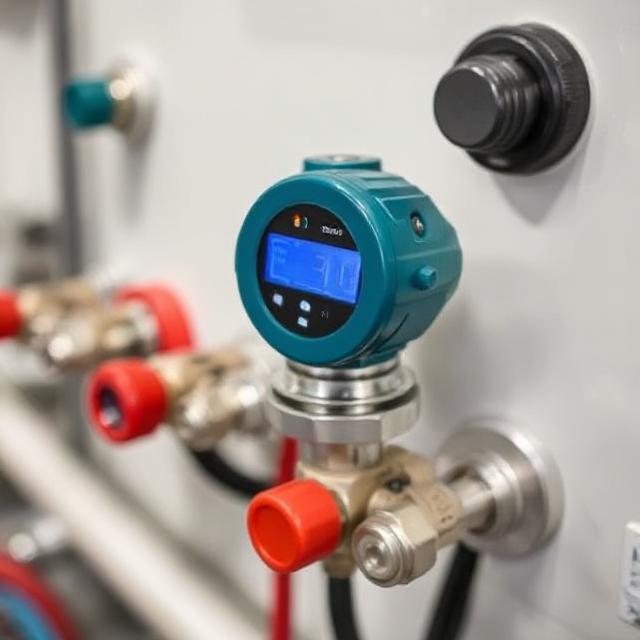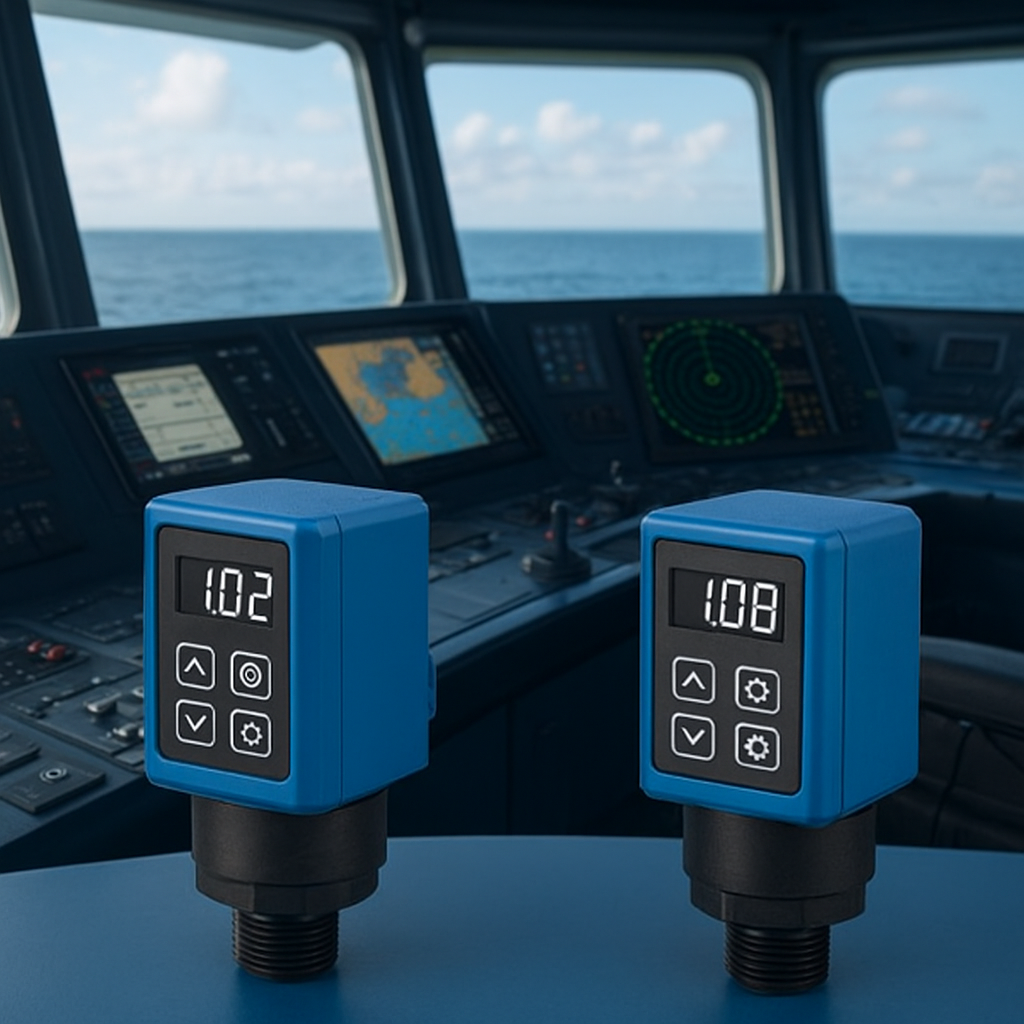Modern marine automation is the backbone of efficient, safe, and reliable ship operations. As vessels become increasingly digitized, automation plays a vital role in monitoring, controlling, and optimizing onboard machinery. From propulsion control to ballast management and engine room monitoring, every system relies on precise instruments and intelligent devices to ensure smooth functioning.
Among these critical devices, pressure switches in marine automation hold a key position. They act as the first line of defense in detecting abnormal pressure levels, protecting essential systems from potential failures. As technology advances, smart pressure switches are transforming how ships are controlled and monitored — offering accuracy, connectivity, and predictive maintenance capabilities that traditional switches could never achieve.
What Are Pressure Switches in Marine Automation?

A pressure switch is an electronic component designed to detect changes in pressure within a fluid system such as air, oil, fuel, or water — and activate or deactivate an electrical circuit when a specific threshold is reached.
In marine applications, pressure switches in marine automation are used to monitor and control vital systems including:
- Engine lubrication and fuel oil pressure
- Cooling water circulation
- Hydraulic systems
- Air compressors and pumps
- Ballast and bilge systems
For instance, when the oil pressure in an engine drops below a safe level, the pressure switch triggers an alarm or shuts down the system to prevent damage. This automatic response ensures safety, operational continuity, and compliance with international maritime standards.
The Evolution of Smart Pressure Switches
The marine industry has come a long way from purely mechanical pressure switches to the age of smart pressure switches. Traditional switches relied on springs and diaphragms, offering simple on/off functions. However, they lacked precision, digital communication, and diagnostic capabilities.
Smart pressure switches represent a leap forward. They combine traditional pressure sensing with digital intelligence, microprocessors, and IoT connectivity. These switches not only detect pressure changes but also communicate data to control systems in real time.
With the rise of Industry 4.0, ship operators now demand data-driven insights and remote monitoring — making smart pressure switches an essential part of marine automation.
How Smart Pressure Switches Improve Marine Control Systems
Smart pressure switches enhance marine control systems by integrating advanced sensing, data communication, and self-diagnostic features. Unlike older switches that simply send binary signals, smart models offer detailed pressure readings and system feedback, improving safety, reliability, and efficiency.
Here’s how they make a difference:
- Real-Time Monitoring – They continuously measure pressure and send data to the ship’s control network.
- Digital Accuracy – Smart switches reduce calibration drift and measurement errors, providing stable long-term performance.
- Remote Access and Diagnostics – Operators can monitor switch performance and system health from control rooms or even remotely via cloud-connected systems.
- Predictive Maintenance – Smart switches can forecast potential issues, reducing unexpected downtime and maintenance costs.
- System Integration – They easily integrate with PLCs, SCADA, and marine monitoring systems using protocols like Modbus or CANopen.
These capabilities significantly enhance operational awareness and system reliability, ensuring vessels operate safely even in challenging sea conditions.
Key Features and Functions of Smart Pressure Switches

Smart pressure switches are engineered to meet the harsh demands of marine environments including vibration, humidity, saltwater exposure, and temperature variations. Below are their standout features and functions:
1. Digital Display and Configuration
Smart switches often come with LCD or LED displays, allowing easy local pressure reading, configuration, and fault detection.
2. Programmable Setpoints
Engineers can precisely set activation points, hysteresis, and delay times for accurate control.
3. Integrated Sensors
Built-in pressure transducers provide high-resolution measurements, ensuring reliability and consistency.
4. Communication Interfaces
Smart pressure switches support digital communication via Modbus RTU, CANopen, or IO-Link, enabling seamless integration with control systems.
5. Alarm and Fault Reporting
They provide real-time alarms for overpressure, underpressure, or sensor malfunction, improving safety.
6. Rugged Marine Design
Manufactured using corrosion-resistant materials like stainless steel, these switches are certified for marine class approvals (e.g., DNV, ABS, Lloyd’s Register).
7. Low Power Consumption
Energy-efficient designs make them suitable for continuous operation on vessels where power optimization is critical.
Applications in Marine Automation
Smart pressure switches are versatile components used throughout a ship’s automation network. Their ability to detect, communicate, and act upon pressure variations makes them essential in numerous marine applications:
1. Engine Room Monitoring
- They ensure proper oil and fuel pressure levels in main and auxiliary engines, triggering alarms during anomalies.
2. Lubrication and Cooling Systems
- By maintaining correct fluid pressures, they protect vital machinery from overheating and wear.
3. Air Compressors and Pneumatic Controls
- They monitor air pressure in compressor systems, ensuring stable supply for onboard tools and automation systems.
4. Ballast and Bilge Systems
- Smart pressure switches detect water levels and pressure changes, automating ballast transfer and preventing flooding.
5. Hydraulic Steering and Winch Systems
- They monitor hydraulic circuit pressures, ensuring smooth steering control and deck machinery operation.
6. Firefighting and Safety Systems
- Used in fire suppression and sprinkler systems to ensure constant pressure and immediate response during emergencies.
In every application, pressure switches in marine automation contribute to safety, efficiency, and compliance with international maritime regulations.
Benefits of Using Smart Pressure Switches in Marine Automation
Adopting smart pressure switches offers multiple operational, safety, and economic advantages:
- Enhanced Reliability: Continuous self-check and diagnostics ensure stable performance under extreme conditions.
- Data Transparency: Real-time data enables informed decisions for maintenance and performance optimization.
- Improved Safety: Quick detection of abnormal pressure conditions prevents costly equipment damage and hazards.
- Energy Efficiency: Optimized control reduces unnecessary energy consumption in pumps and compressors.
- Reduced Downtime: Predictive maintenance minimizes unexpected equipment failures.
- Compliance: Meets global maritime automation and safety standards.
- Cost Savings: Lower maintenance frequency and reduced manual checks lead to long-term savings.
These benefits make smart pressure switches an intelligent investment for modern ships focused on automation, sustainability, and reliability.
Future Trends and Innovations in Marine Automation

The future of pressure switches in marine automation is heading toward greater intelligence, connectivity, and sustainability. Several emerging trends are shaping the next generation of marine control systems:
- Integration with IoT and Cloud Platforms – Smart pressure switches will transmit data to cloud-based systems for real-time analytics and fleet-wide monitoring.
- AI-Driven Predictive Maintenance – Artificial intelligence will analyze sensor data to predict potential failures before they occur.
- Wireless Communication – Wireless-enabled pressure switches will reduce cabling costs and simplify retrofitting.
- Energy-Efficient Designs – Manufacturers are developing low-power smart switches for energy-conscious vessels.
- Cybersecurity in Marine Automation – As connectivity increases, secure communication protocols will be vital to prevent unauthorized access.
- Hybrid Smart Sensors – Combining pressure, temperature, and vibration sensors into single intelligent modules for multi-parameter monitoring.
These innovations align with the global move toward smart shipping, autonomous vessels, and sustainable maritime operations — where data, connectivity, and automation drive every decision.
In the ever-evolving world of marine automation, smart pressure switches have become a cornerstone of reliability and control. They ensure that vital ship systems — from engines to pumps — operate safely and efficiently. By offering precise monitoring, digital connectivity, and predictive diagnostics, they empower marine engineers and operators to manage complex systems with confidence.
As vessels continue to adopt advanced automation technologies, investing in smart pressure switches is no longer optional — it’s essential for achieving operational excellence, safety, and compliance in a competitive maritime industry.
If you are looking to upgrade or integrate pressure switches in marine automation, explore our range of advanced marine control products and intelligent pressure monitoring solutions designed to meet the highest international standards.

